1. Wilk R, Adamczyk P, Pluskiewicz W, Skrzypek M, Hajzyk M, Koczy B. One year of the COVID-19 pandemic in Poland-the incidence of osteoporotic forearm, arm, and hip fractures. Arch Osteoporos. 2022; 17(1):38. PMID:
35239040.

2. Jung J. A long way to the recovery: COVID-19 will not disappear. J Korean Med Sci. 2021; 36(32):e231. PMID:
34402229.

3. Slullitel PA, Lucero CM, Soruco ML, Barla JD, Benchimol JA, Boietti BR, et al. Prolonged social lockdown during COVID-19 pandemic and hip fracture epidemiology. Int Orthop. 2020; 44(10):1887–1895. PMID:
32772318.

4. Shin MS, Sim B, Jang WM, Lee JY. Estimation of excess all-cause mortality during COVID-19 pandemic in Korea. J Korean Med Sci. 2021; 36(39):e280. PMID:
34636505.

5. Yoon HK, Park C, Jang S, Jang S, Lee YK, Ha YC. Incidence and mortality following hip fracture in Korea. J Korean Med Sci. 2011; 26(8):1087–1092. PMID:
21860561.

6. Nazemi AK, Al-Humadi SM, Tantone R, Hays TR, Bowen SN, Komatsu DE, et al. Hip fractures before and during the COVID-19 pandemic: comparative demographics and outcomes. Geriatr Orthop Surg Rehabil. 2021; 12:21514593211003077. PMID:
33796344.

7. Amzallag N, Factor S, Shichman I, Ben-Tov T, Khoury A. Hip fractures during the COVID-19 pandemic: demographics, treatment pathway, and outcomes. Isr Med Assoc J. 2021; 23(8):484–489. PMID:
34392622.
8. Brent L, Ferris H, Sorensen J, Valentelyte G, Kelly F, Hurson C, et al. Impact of COVID-19 on hip fracture care in Ireland: findings from the Irish Hip Fracture Database. Eur Geriatr Med. 2022; 13(2):425–431. PMID:
35064562.

9. da Silva AC, da Silva Santos G, Maluf EM, Borba VZ. Incidence of hip fractures during the COVID-19 pandemic in the Brazilian public health care system. Arch Osteoporos. 2022; 17(1):42. PMID:
35253090.

10. Hadfield JN, Gray AC. The evolving COVID-19 effect on hip fracture patients. Injury. 2020; 51(7):1411–1412. PMID:
32553412.

11. Kim KK, Lee SW, Choi JK, Won YY. Epidemiology and postoperative complications of hip fracture during COVID-19 pandemic. Osteoporos Sarcopenia. 2022; 8(1):17–23. PMID:
35350648.

12. Johansen A, Inman DS. A view of COVID-19 from the perspective of the National Hip Fracture Database. Bone Joint J. 2021; 103-B(6):1007–1008. PMID:
34058880.

13. Shemesh S, Bebin A, Niego N, Frenkel Rutenberg T. The impact of the COVID-19 2020 pandemic on hospital length of stay following fragility hip fracture surgery. Isr Med Assoc J. 2021; 23(8):469–474. PMID:
34392619.
14. Prosso I, Oren N, Livshits G, Lakstein D. Incidence and mortality rate of hip fractures in different age groups during the first wave of the COVID-19 pandemic. Isr Med Assoc J. 2021; 23(8):475–478. PMID:
34392620.
15. Ojeda-Thies C, Cuarental-García J, Ramos-Pascua LR. Decreased volume of hip fractures observed during COVID-19 lockdown. Eur Geriatr Med. 2021; 12(4):759–766. PMID:
33481186.

17. Quan H, Sundararajan V, Halfon P, Fong A, Burnand B, Luthi JC, et al. Coding algorithms for defining comorbidities in ICD-9-CM and ICD-10 administrative data. Med Care. 2005; 43(11):1130–1139. PMID:
16224307.

18. Schweda A, Weismüller B, Bäuerle A, Dörrie N, Musche V, Fink M, et al. Phenotyping mental health: age, community size, and depression differently modulate COVID-19-related fear and generalized anxiety. Compr Psychiatry. 2021; 104:152218. PMID:
33232827.

19. Ju G, Lee J, Ahn MH, Lee J, Kim EJ, Suh S, et al. Effects of depression and resilience of public workers on work-related stress and anxiety in response to the COVID-19 pandemic. J Korean Med Sci. 2021; 36(36):e262. PMID:
34519189.

20. Park C, Hwang JM, Jo S, Bae SJ, Sakong J. COVID-19 outbreak and its association with healthcare workers’ emotional stress: a cross-sectional study. J Korean Med Sci. 2020; 35(41):e372. PMID:
33107230.

21. Malik-Tabassum K, Robertson A, Tadros BJ, Chan G, Crooks M, Buckle C, et al. The effect of the COVID-19 lockdown on the epidemiology of hip fractures in the elderly: a multicentre cohort study. Ann R Coll Surg Engl. 2021; 103(5):337–344. PMID:
33715420.

22. Pluskiewicz W, Wilk R, Adamczyk P, Hajzyk M, Swoboda M, Sladek A, et al. The incidence of arm, forearm, and hip osteoporotic fractures during early stage of COVID-19 pandemic. Osteoporos Int. 2021; 32(8):1595–1599. PMID:
33515269.

23. Sterling RS. Gender and race/ethnicity differences in hip fracture incidence, morbidity, mortality, and function. Clin Orthop Relat Res. 2011; 469(7):1913–1918. PMID:
21161737.

24. Pieh C, Budimir S, Probst T. The effect of age, gender, income, work, and physical activity on mental health during coronavirus disease (COVID-19) lockdown in Austria. J Psychosom Res. 2020; 136:110186. PMID:
32682159.

25. Visser M, Schaap LA, Wijnhoven HA. Self-reported impact of the COVID-19 pandemic on nutrition and physical activity behaviour in dutch older adults living independently. Nutrients. 2020; 12(12):3708. PMID:
33266217.

26. Wang KC, Xiao R, Cheung ZB, Barbera JP, Forsh DA. Early mortality after hip fracture surgery in COVID-19 patients: a systematic review and meta-analysis. J Orthop. 2020; 22:584–591. PMID:
33223732.

27. Raheman FJ, Rojoa DM, Nayan Parekh J, Berber R, Ashford R. Meta-analysis and metaregression of risk factors associated with mortality in hip fracture patients during the COVID-19 pandemic. Sci Rep. 2021; 11(1):10157. PMID:
33980936.

28. Minarro JC, Zamorano-Moyano C, Urbano-Luque MT, Arenas-de Larriva AP, Izquierdo-Fernández A, Quevedo-Reinoso R. Is COVID-19 affecting the incidence of hip fractures? Injury. 2020; 51(10):2329. PMID:
32713621.

29. Waterman JL, Jayaraju U, Nadimi JK, Morgan D. Impact of COVID-19 on key performance indicators of the national hip fracture database and the management of hip fracture patients. Cureus. 2021; 13(12):e20575. PMID:
35103154.

30. Tu DP, Liu Z, Yu YK, Xu C, Shi XL. Internal fixation versus hemiarthroplasty in the treatment of unstable intertrochanteric fractures in the elderly: a systematic review and meta-analysis. Orthop Surg. 2020; 12(4):1053–1064. PMID:
32691520.

31. Yoo JI, Ha YC, Lim JY, Kang H, Yoon BH, Kim H. Early rehabilitation in elderly after arthroplasty versus internal fixation for unstable intertrochanteric fractures of femur: systematic review and meta-analysis. J Korean Med Sci. 2017; 32(5):858–867. PMID:
28378562.

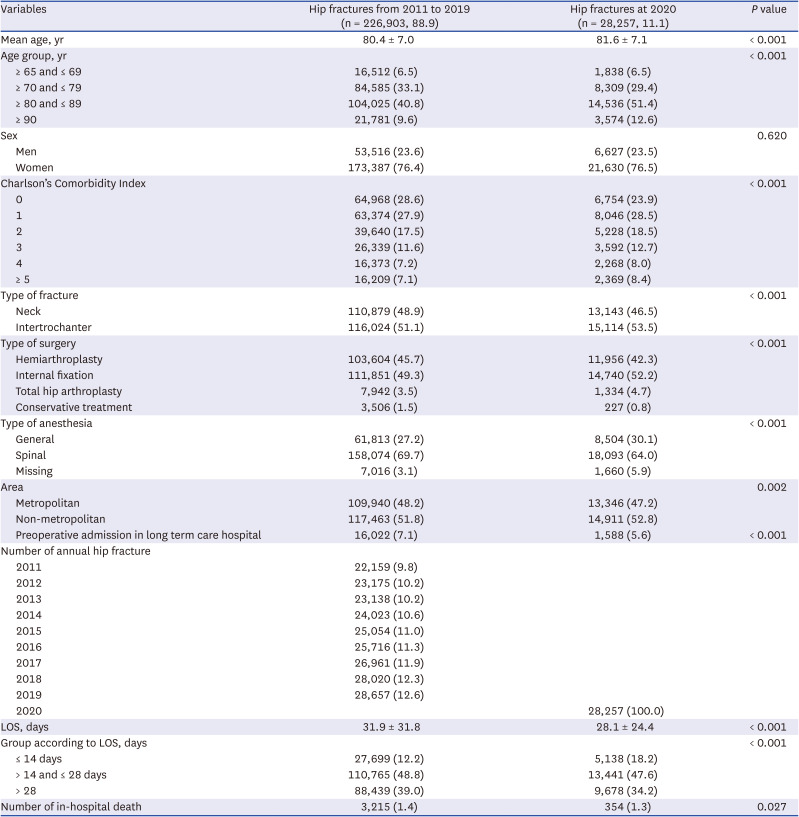
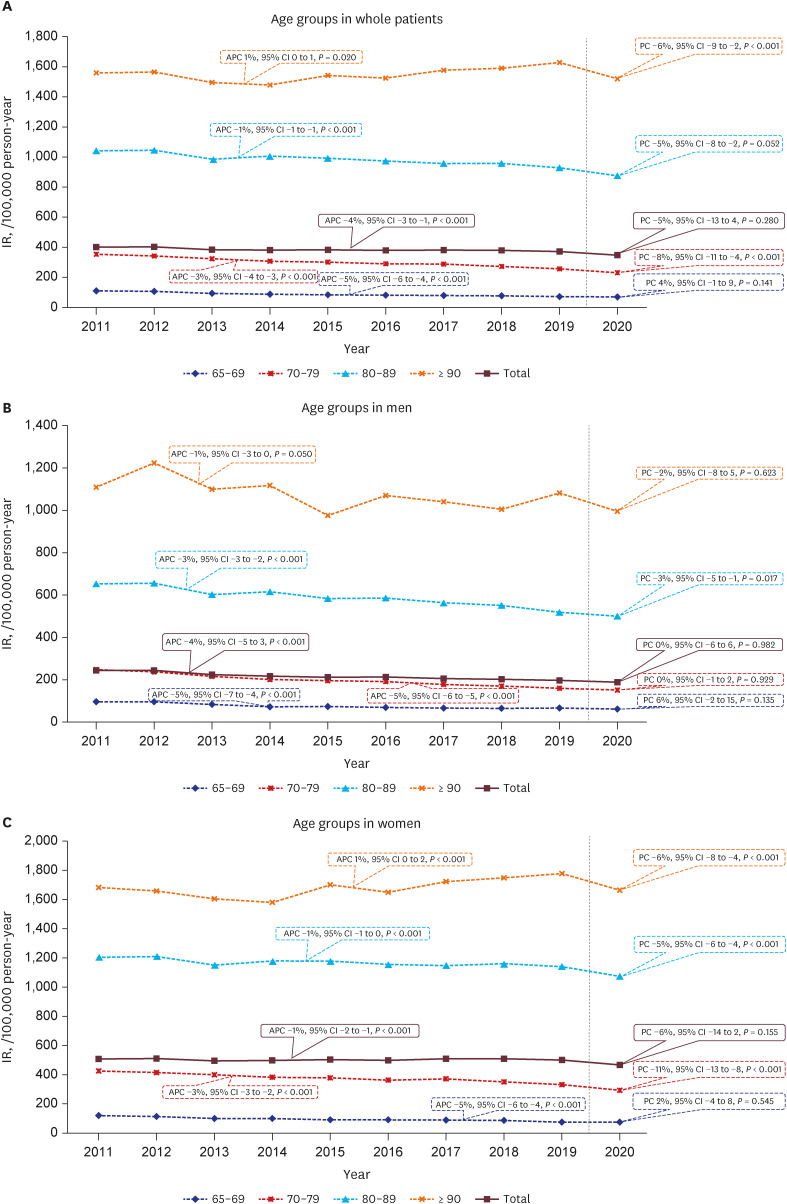
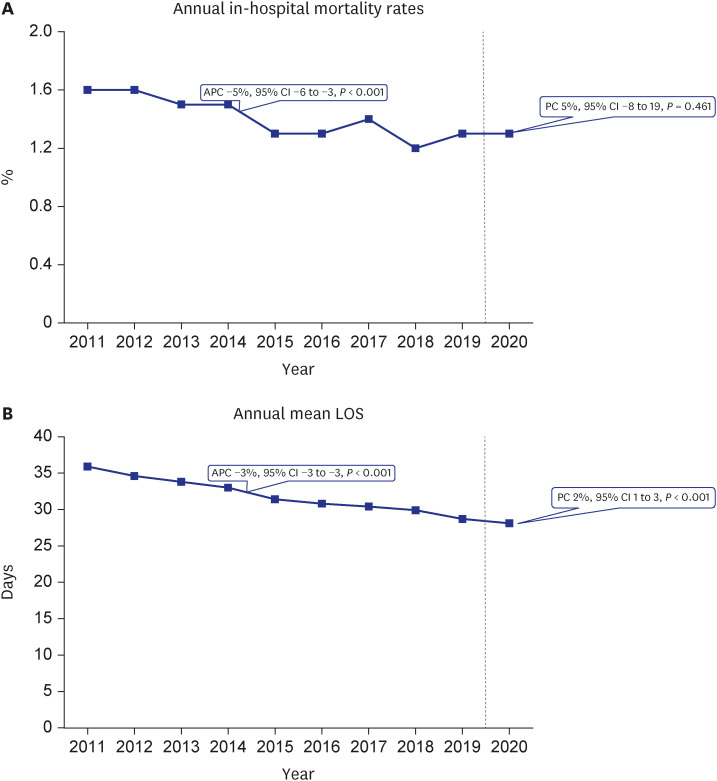
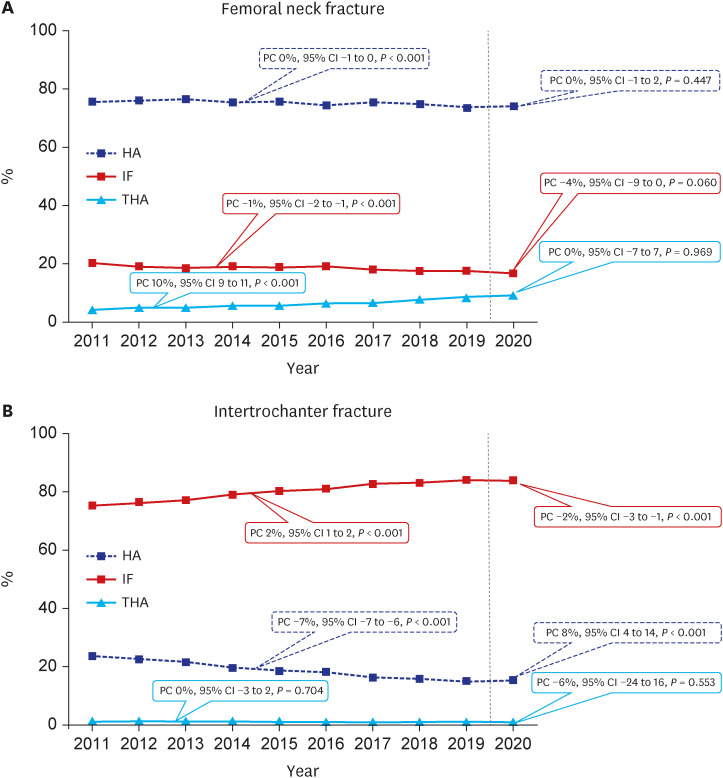




 PDF
PDF Citation
Citation Print
Print



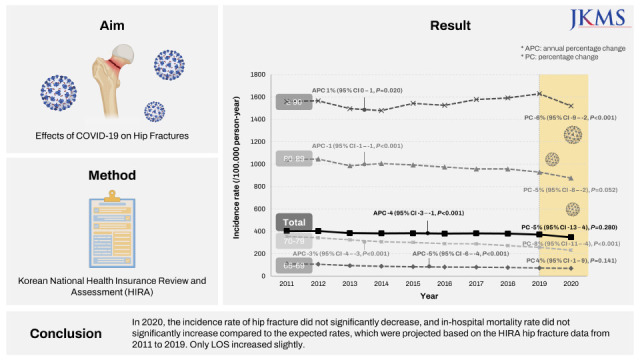
 XML Download
XML Download